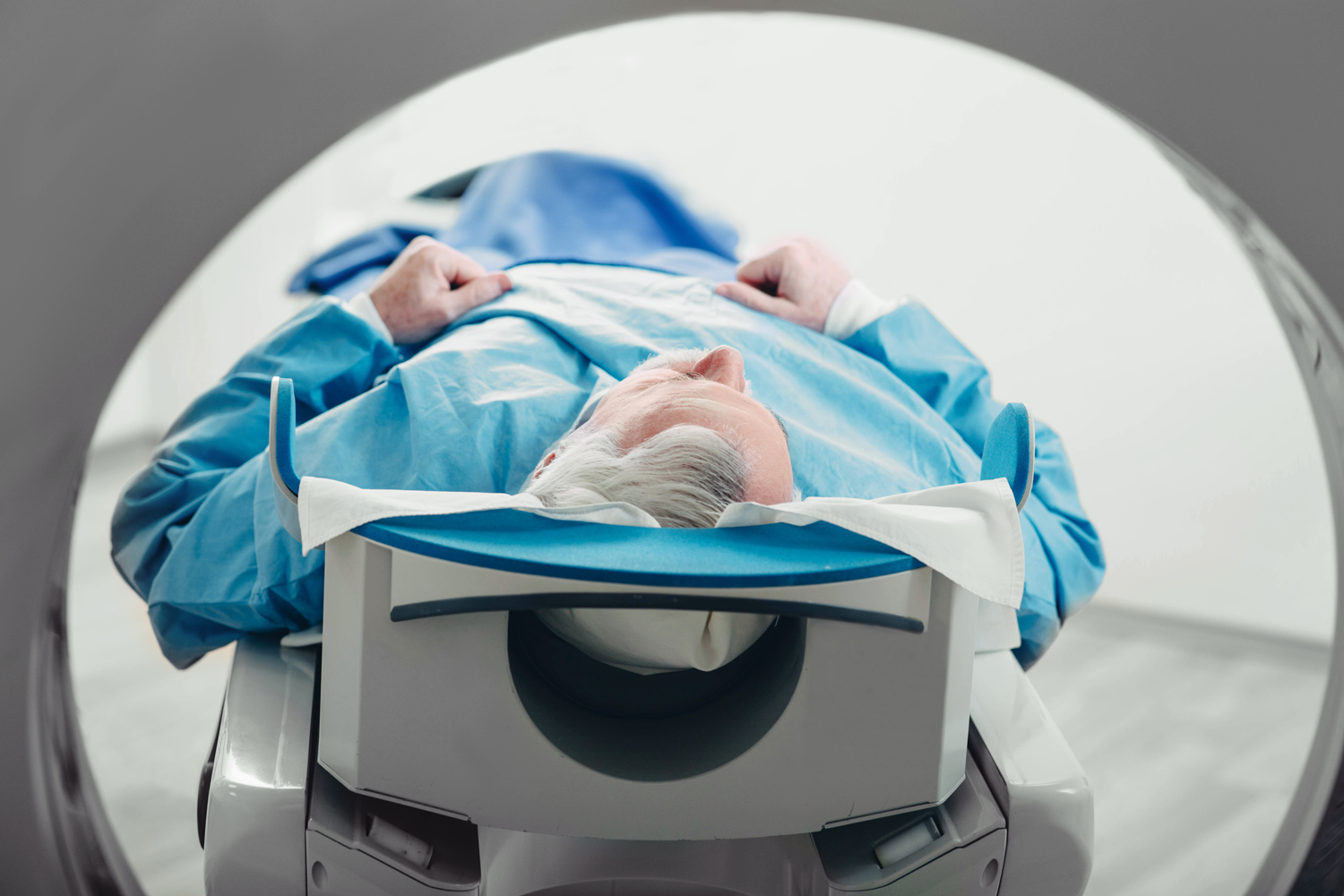PROSTATE CANCER CONTINUES TO TAKE A TOLL. About one in eight men in the U.S. will be diagnosed with the disease in his lifetime, according to the American Cancer Society. After lung cancer, prostate cancer is the second leading cause of cancer death in American men.
But imaging with PSMA PET—prostate-specific membrane antigen positron emission tomography—is proving to be a more valuable tool for identifying prostate cancer metastases when compared with conventional PET imaging. The advantage allows doctors to more accurately stage the disease and tailor treatment. “PSMA PET is the best tool we have today to image prostate cancer,” says Thomas Hope, a radiologist at UCSF Health in San Francisco.
PSMA PET imaging technology uses a standard PET scan, combined with a CT or MRI scan, plus a radiopharmaceutical, an injectable radioactive agent that emits a positron, a type of molecule. The radiopharmaceutical binds to PSMA, which is a protein that prostate cancer cells release. “We can image where the radiopharmaceutical particle goes in the body,” Hope says. Benign bone and other types of tumors can also express PSMA. “But, in general, PSMA is overly expressed in prostate cancer, which is why PSMA PET is very good at imaging it,” Hope says.
In a study in the November 2021 issue of JAMA Oncology using PSMA PET with the radiopharmaceutical Gallium (Ga) 68 PSMA-11, the specificity, or the test’s ability to correctly find when there were no prostate cancer cells in the lymph nodes of men with intermediate- to high-risk prostate cancer, was 95%. Ga 68 PSMA-11 was approved by the Food and Drug Administration (FDA) in December 2020, the first PSMA PET radiopharmaceutical agent to receive FDA approval. There are now five such agents approved by the FDA with more on the horizon. PSMA PET is approved for use in three ways:
- Initial prostate cancer staging for men with intermediate- or high-risk prostate cancer as indicated by higher amounts of prostate-specific antigen (PSA) in the blood or a higher Gleason score (8 to 10). “If you’re at elevated risk for having metastasis, a PSMA PET can help detect metastatic disease—disease outside of the prostate,” Hope says.
- Detecting disease after biochemical recurrence. After treatment for prostate cancer with surgery or localized radiation therapy, your PSA should be 0. Rising PSA results can be a warning on a microscopic level of prostate cancer cells somewhere in the body, a disease state known as biochemical recurrence. At low levels, biochemical recurrence may be undetectable with conventional imaging. With PSMA PET, however, “we’re picking up this disease at very low PSA levels, even when PSA is undetectable,” says David Schuster, a nuclear imaging researcher at Winship Cancer Institute of Emory University in Atlanta. “It’s changing how we look at the disease process.” Radiologists can use PSMA PET to see if, after prostatectomy, prostate cancer cells are still in the area where the tumor was removed or have spread to the lymph nodes or bones, or somewhere outside the pelvis. “If someone has only a few, usually small, metastases, we may be able to zap those extra couple of lesions and delay the need for systemic androgen deprivation therapy,” Hope says.
- PSMA radioligand therapy. PSMA technology can also be used to eradicate cancer cells. “We take the same molecule we’re using for imaging, but instead label it with a different type of radiopharmaceutical that kills cancer cells,” Hope says.
Getting a Clearer Picture of Prostate Health
“PSMA PET not only helps target treatment. It’s helpful to patients on a psychological level,” Schuster says. “It gives patients answers, such as where their cancer is or what’s causing their biochemical recurrence, which can provide a certain peace of mind.”
Although PSMA PET is relatively new in the U.S., it’s included in National Comprehensive Cancer Network guidelines and is covered by Medicare. “PSMA PET is well accepted. There should be no challenges in getting insurance coverage,” Schuster says. Yet, PSMA PET may not be offered everywhere due to the high cost of the radiopharmaceutical.
Once you find a cancer center that offers PSMA PET, however, do your homework. “It’s best to go to an institution that has a lot of experience with this nuclear medicine test,” Schuster says. Like any skill, those who do it frequently tend to develop a greater proficiency, he adds. Ask the provider or the medical staff how many PSMA PET scans the radiologist performs per week. “Five to 10 per week is a good benchmark,” Schuster says.
A PSMA PET scan requires no special preparation. After receiving the radiopharmaceutical injection, you’ll wait an hour at the imaging center before undergoing the PSMA PET. The radiopharmaceuticals don’t usually cause side effects. “We use them at concentrations too low to even cause an allergic reaction,” Hope says. The entire procedure takes about two hours.
Cancer Today magazine is free to cancer patients, survivors and caregivers who live in the U.S. Subscribe here to receive four issues per year.





